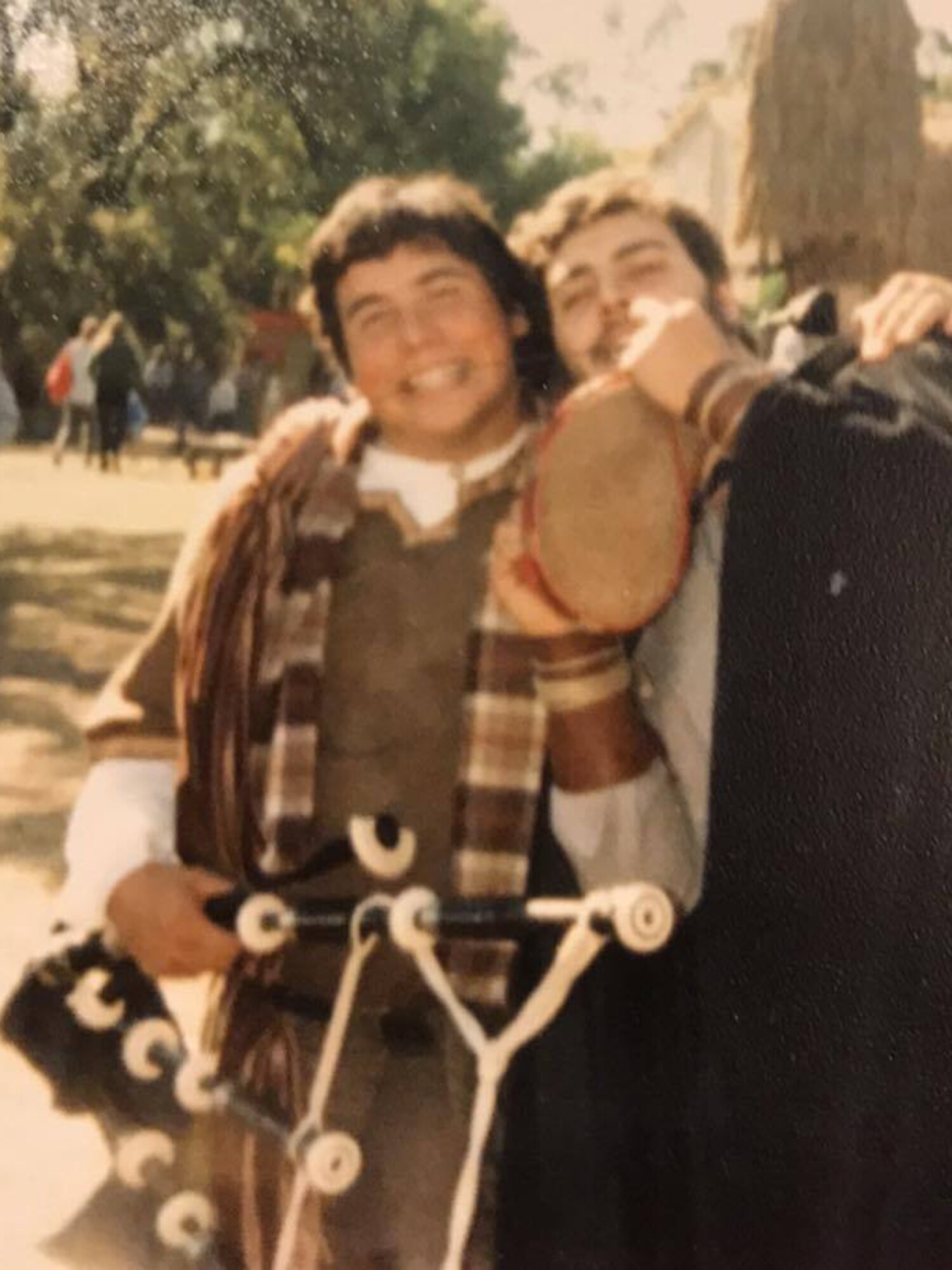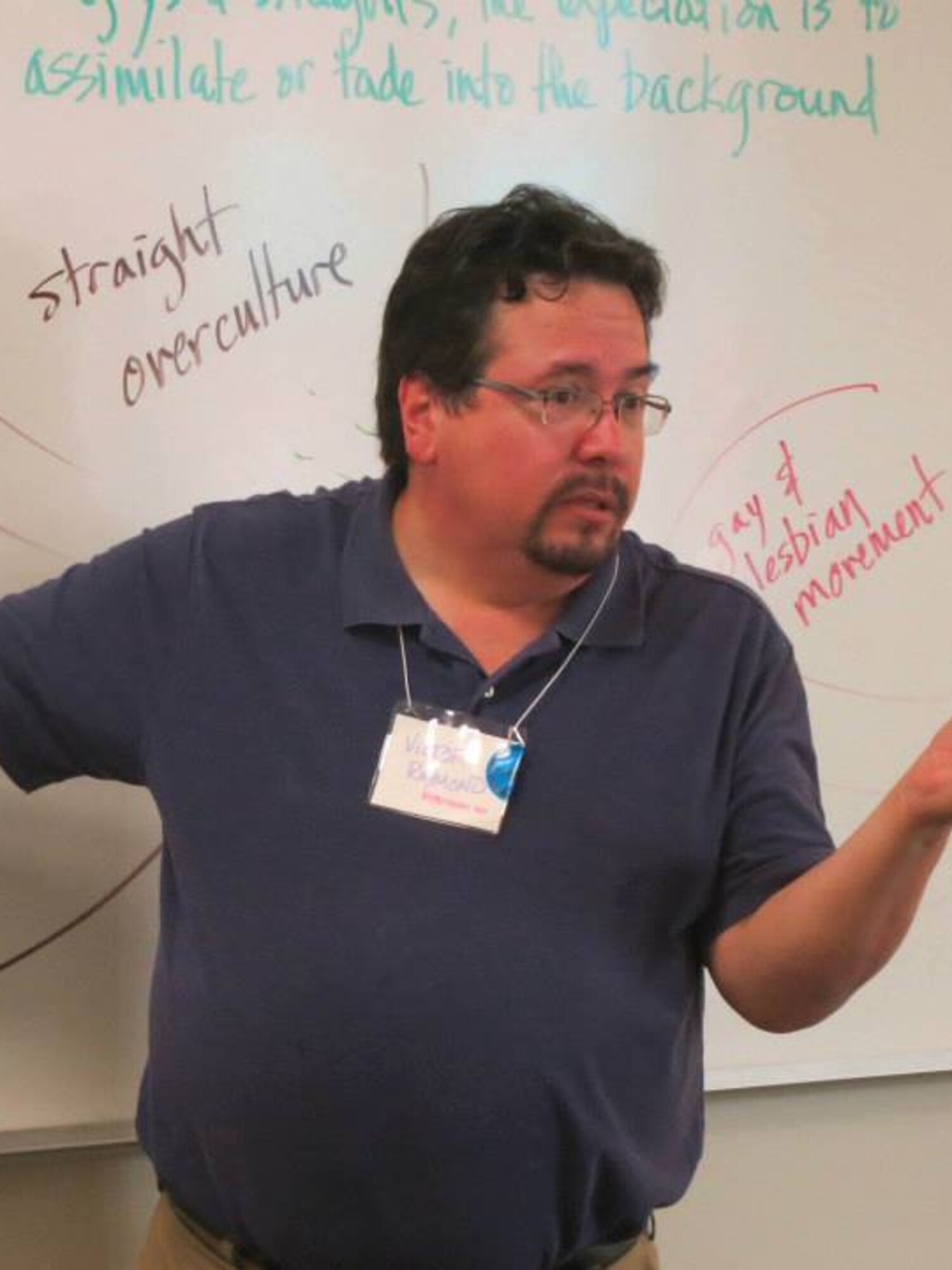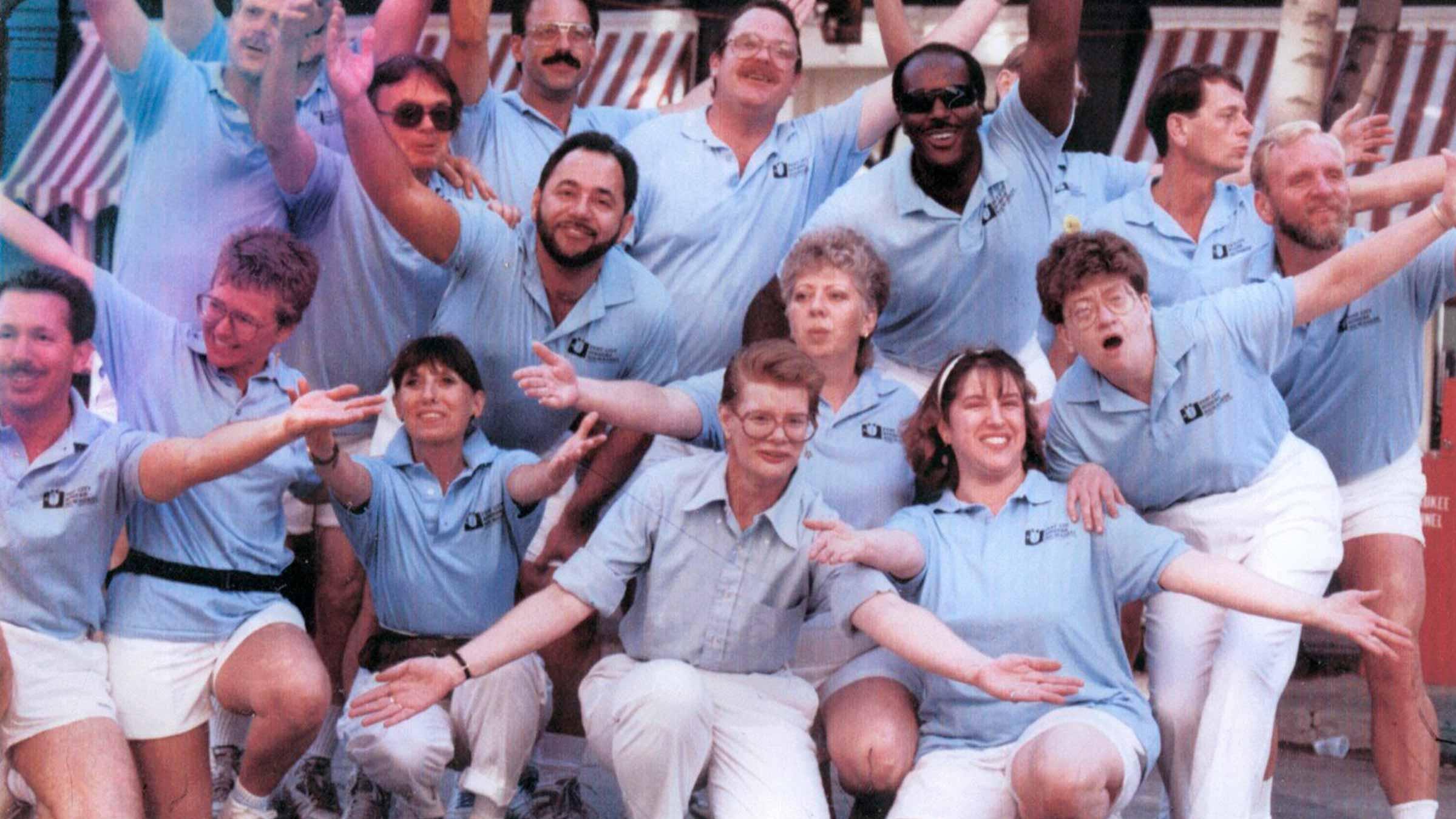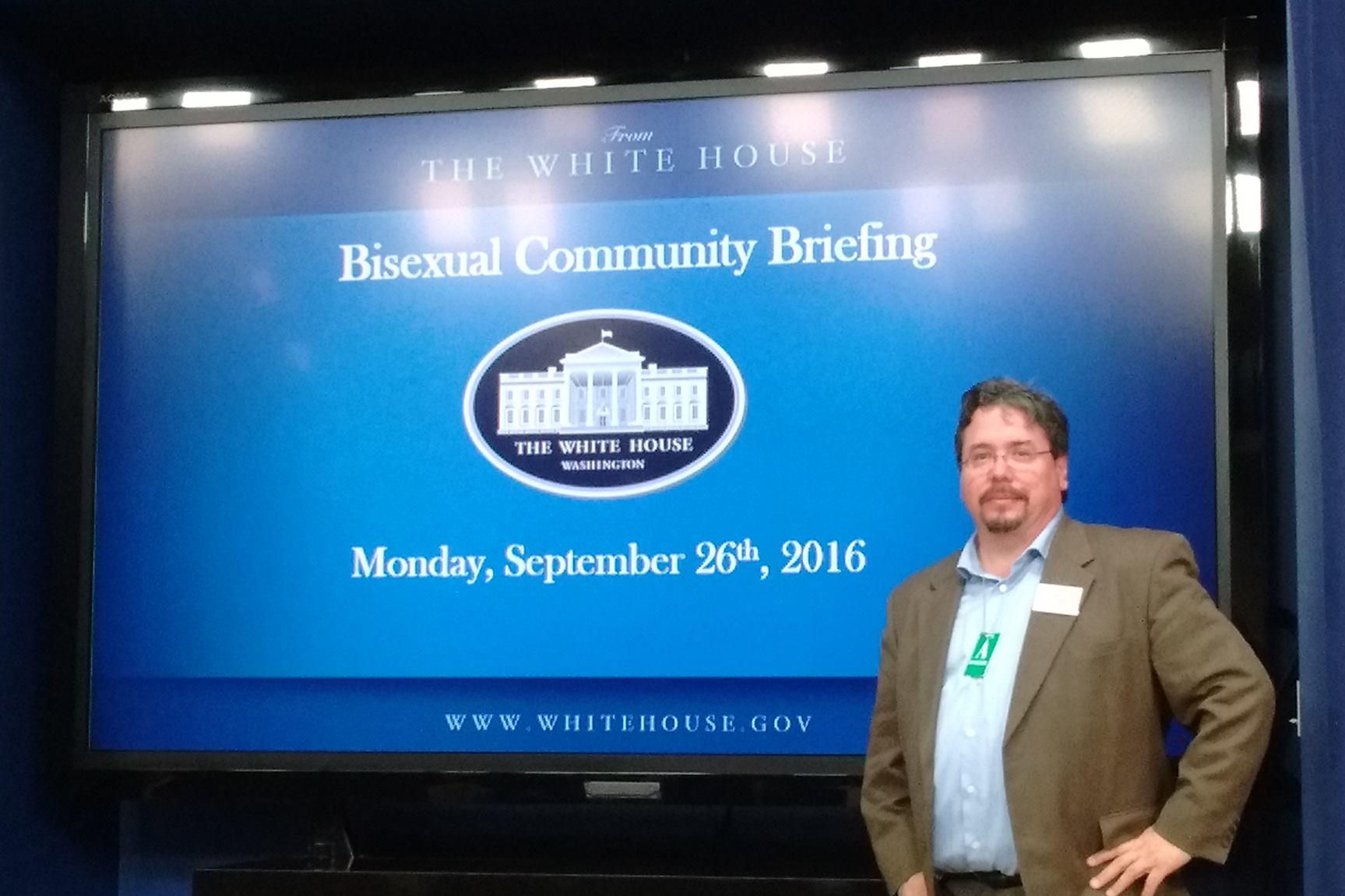
Victor Raymond: show the world who we are

"Being bisexual in society is difficult, because both the heterosexual and homosexual communities have a stake in making sure that bisexuality doesn't exist."
At a very early age, Victor knew he was different from the other kids.
"I grew up in St. Paul with a white mother and a Native American father. I’m a member of the Rosebud Sioux tribe of South Dakota. My heritage was a big part of my childhood."
Being biracial was only the beginning. Growing up, Victor learned it was OK to express attraction to girls, but not OK to be attracted to boys. He had his first relationships in high school, first with a female at age 14, and then with a male at age 17.
"I realized I was bisexual, and it was an interesting revelation to have as a teenager in the late 1970s," said Victor.
Victor joined 1 in 5, a Twin Cities support group. The name refers to the middle of the Kinsey Scale of sexual identity, which ranges from zero (100% heterosexual) to six (100% homosexual.)
"There are so many people -- especially LGBTQ people -- who think they need to dive off the shore of Zero and swim and swim and swim," said Victor. "It's like crossing the English Channel, and eventually, they surface on the coastline of Six."
"And I'm over here, saying hey, there are all these lovely tropical islands (1-5) and you swam right past all of them."
While in college, Victor was the one bi guy in the university's Gay and Lesbian Alliance.
"I wound up being president for a year, because someone had to do it," said Victor. "And then I thought, wait, I'm bisexual, and my identity isn't even included in the name of the group. I was young and I wasn't in any position to do anything about it, but it stuck with me."
Wisconsin proud
Victor earned a doctorate in sociology at Iowa State University and a minor in women's studies.
"Today we call it gender studies," laughed Victor. "You can always tell when a university implemented their program based on what they call it."
After obtaining a doctorate from the University of Minnesota, Victor's partner accepted a job in Wisconsin, and the two moved to Madison in 2009.
"I was aware of two active bisexual groups in Wisconsin," said Victor, "Bi Definition in Milwaukee and Bi Shy Why in Madison. I thought, wow, this will be great: now that grad school is over, I'll move to Madison, I'll reconnect with these groups, I'll reconnect with my friends, and I'll have this whole new world to explore."
"By the time I arrived in Wisconsin, both groups were gone!"
As someone who'd toured pride events around the country, Victor's first impressions of Madison Capitol Pride were mixed.
"I was so excited, until we got there, and found ourselves on an island of gravel near the Alliant Energy Center," said Victor. "I just kept thinking, there has to be a better place. The Capitol Square. James Madison Park. Anywhere!"
The Pride Guide was another cause for concern.
"It was the sort of thing you'd expect to see in 2009," said Victor. "Beautiful photographs, local advertisements, insightful articles from community leaders...but then I realized something. There was a complete absence of bisexual representation."
"The word bisexual appeared nowhere, and the word bi only appeared in one advertisement. The word transgender didn't appear anywhere either, although the word trans appeared five times."
"Coming from the Twin Cities, which had such considerable diversity, and even Des Moines Pride, which celebrated downtown on the river, I knew Madison could and should do better," said Victor.
"But what really bothered me was this: bisexuals are discriminated against for existing, while being recruited to support LGBTQ events that don't even acknowledge their existence. Bi folks are out there giving it their all, and gaining little to nothing in return."
"The larger community was getting all that energy, all that activism... and then said, 'anyway, back to us' and slammed the door shut on us."
Struggling with stereotypes
Victor remembers the release of the Bisexual Manifesto in 1990, which triggered an emergence of bisexuality as a political, social and cultural identity.
"That manifesto was very specifically inclusive of trans folks," said Victor. "And in the 1990s, bi activists and trans activists often united to hold gay and lesbian leaders accountable for excluding us."
"So, I find it regrettable that bi and pan people today are often in this position of fighting each other for legitimacy. Younger pansexuals often criticize older bisexuals for excluding trans and non-binary folks. We hear from pansexual people that we are transphobic. And that's not only untrue, but ignorant of the history of our movement."
"We faced this in the '80s and '90s, when gay and lesbian people would say, sure, bisexuality exists -- if you're 50/50 in your attractions. Anything else is either straight or gay. This is also untrue."
"Even today, bisexual women are assumed to be straight and bisexual men are assumed to be gay," said Victor. "Many people were railroaded into an either/or decision and stuck there for life, after one same-sex experience, even if that's not entirely what they'd have chosen then or now. They felt this pressure to declare themselves immediately.... and why? Isn't it strange that we have to instantly identify one way or another?"
"We should be allowing people the space to say, hey, I'm on this journey of figuring myself out, and stand back and let them do that. All this gatekeeping makes our community weaker, not stronger."
Bisexual support groups are one space where people can do that, but Victor has seen a curious trend.
"Sometimes, gay men will join a bisexual group during a coming out journey, with this notion that it's only 'half as bad' to be bisexual," said Victor. "These groups might be the first place they can let down their guard and just be themselves."
"But after coming out, they see the world very differently, and part of that new worldview is that bisexuals don't really exist. You just haven't realized that you're gay yet. They assume it's like that for everyone, but I assure you, it is not. And it's not okay to assume that."
Victor points to the work of legal scholar Kenji Yoshino, who wrote that being bisexual in society is difficult, because both the heterosexual and homosexual communities have a stake in making sure that bisexuality doesn't exist.
Victor is also concerned about the "endemic" lack of bisexual representation in LGBTQ organizations.
"When organizations have a mission to represent the rainbow spectrum, they need to think programmatically about how to make that representation happen," said David. "Building truly inclusive organizations is and should be difficult."
"What we need is not this incremental mindset, where we started with gays and lesbians and now we're going to include all these other groups. Nope. What we need is a transformative mindset: one that recognizes anything discriminated against for not being cisgender and heterosexual is part of our rainbow."
"Until we make that transformative mindset shift, we're going to continue to struggle with fair representation. While I've chosen to focus my work on the local level, there's a real need for leaders to step up at the national level. And I can safely say we have miles to go before we sleep."
Icons and inspirations
Bisexual erasure isn't a modern invention, says Victor. History has traditionally straight-washed bisexuals -- and then accused activists of applying modern definitions to past generations.
"Eleanor Roosevelt is a perfect example," he said. "We know she had an intimate relationship with a female journalist. We also know that she was married to Franklin Delano Roosevelt. But we don't know if she was a lesbian or bisexual. We don't know the terms and conditions of the Roosevelt marriage. At the same time, we're not allowed to claim Eleanor as ours, because we're told people didn't have those identities at the time."
"And then I look at someone like David Bowie, someone who's always been cagey about their sexual orientation, having different orientations at different times," said Victor. "He gets to do that, and I'm not going to fault him for that. But it's hard to identify with David Bowie, because I want to be out as bisexual consistently, not just now and then."
Victor has two pieces of advice for his community.
"Be brave and be out," said Victor. "Be out because the world needs to see us, know we exist, and understand who we really are."
"It's so important to be out and visible. And it's so important to show the world an example of an authentic bisexual man."
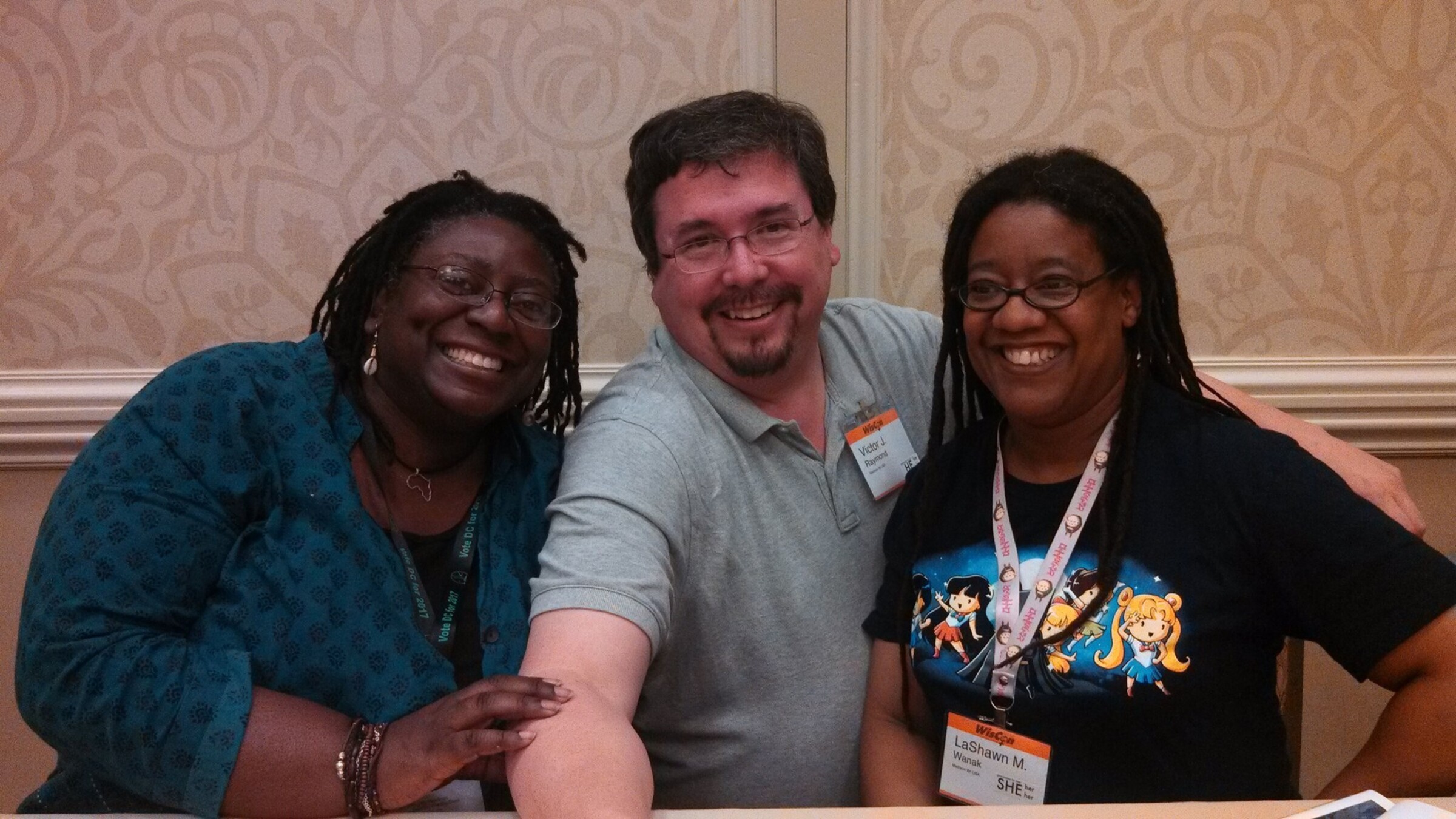 Victor Raymond and friends
Victor Raymond and friends
recent blog posts
June 30, 2025 | Ricardo D. Wynn
May 31, 2025 | Andy Hartman
May 27, 2025 | Andy Hartman
The concept for this web site was envisioned by Don Schwamb in 2003, and over the next 15 years, he was the sole researcher, programmer and primary contributor, bearing all costs for hosting the web site personally.
